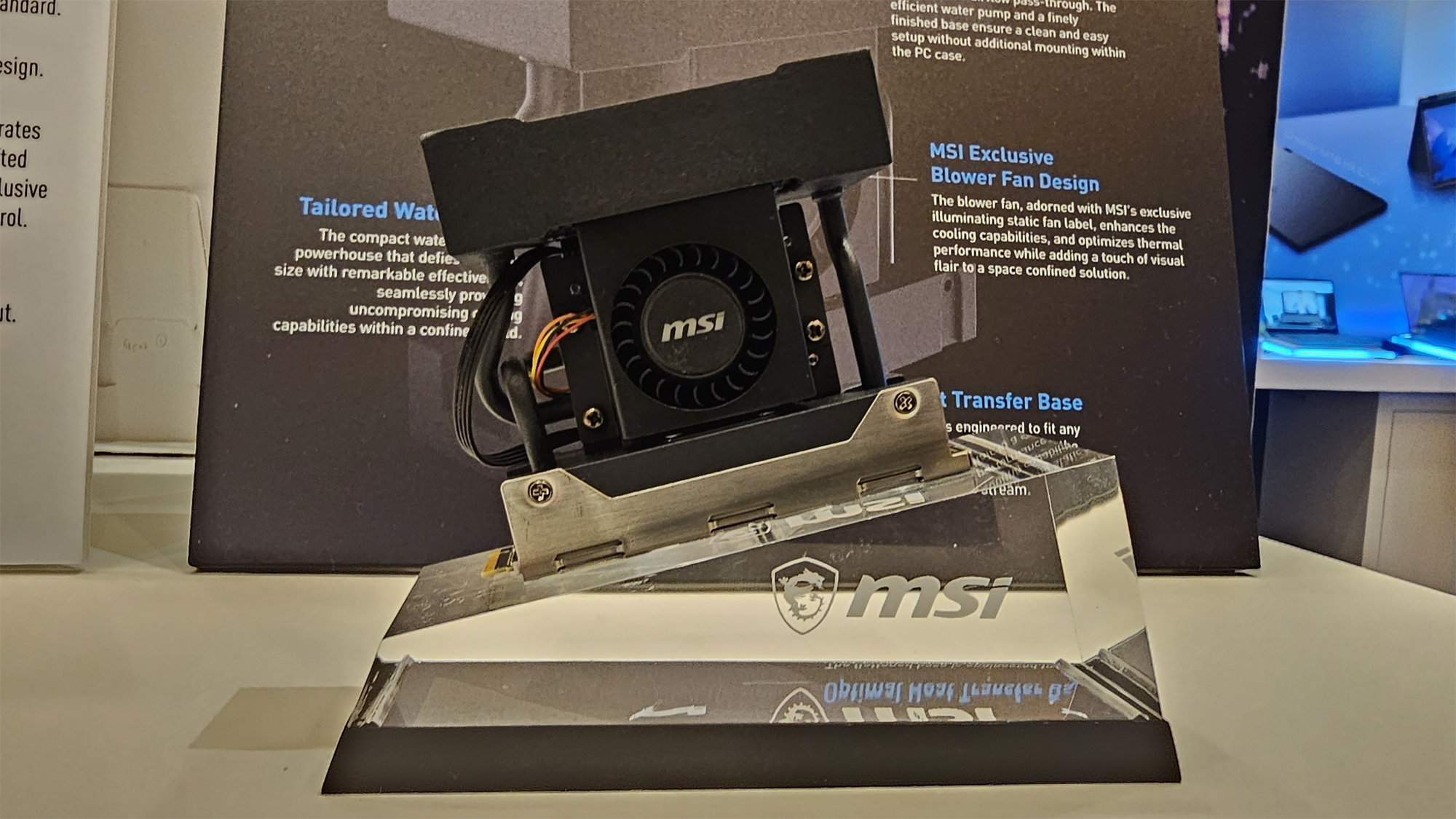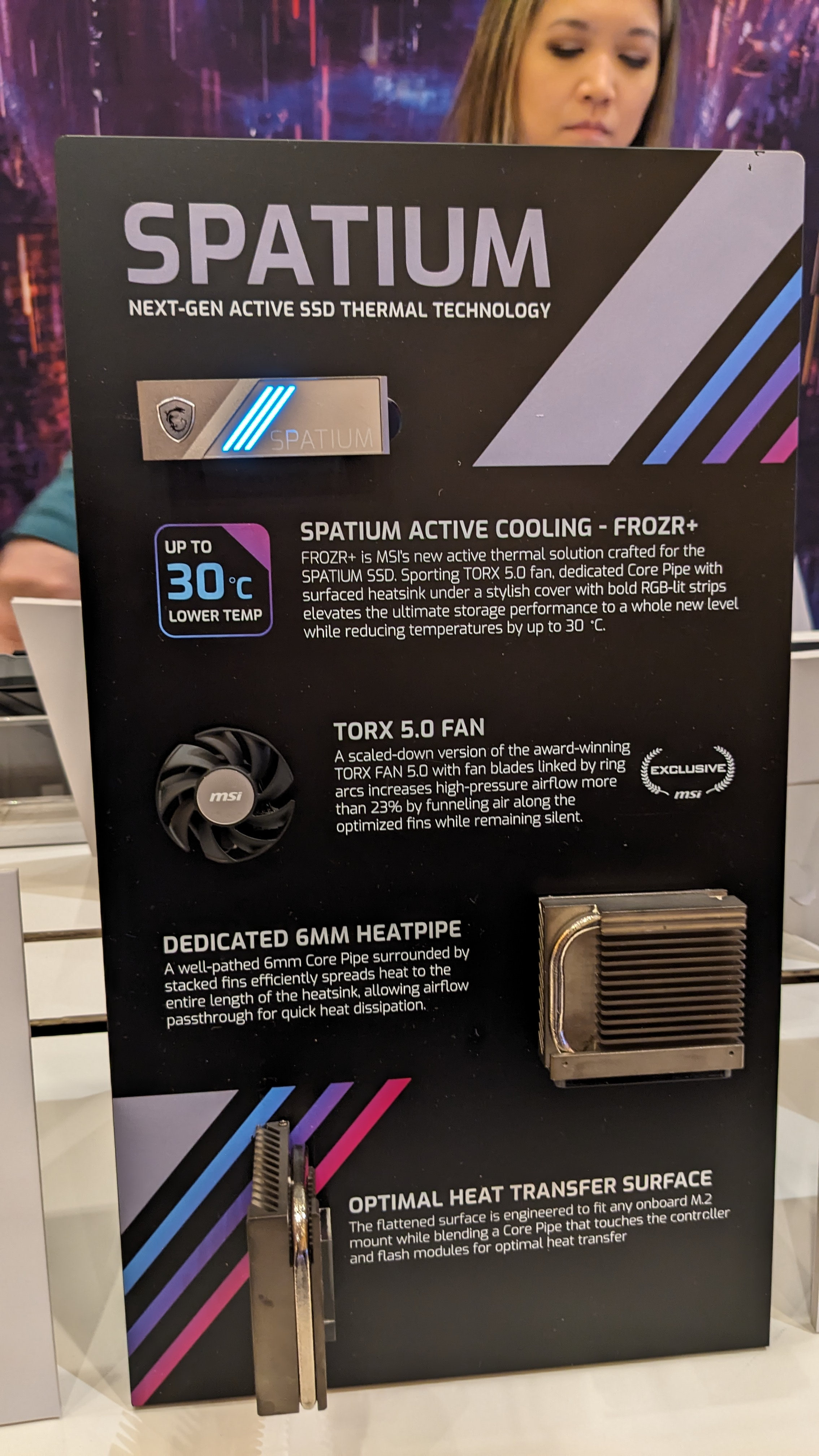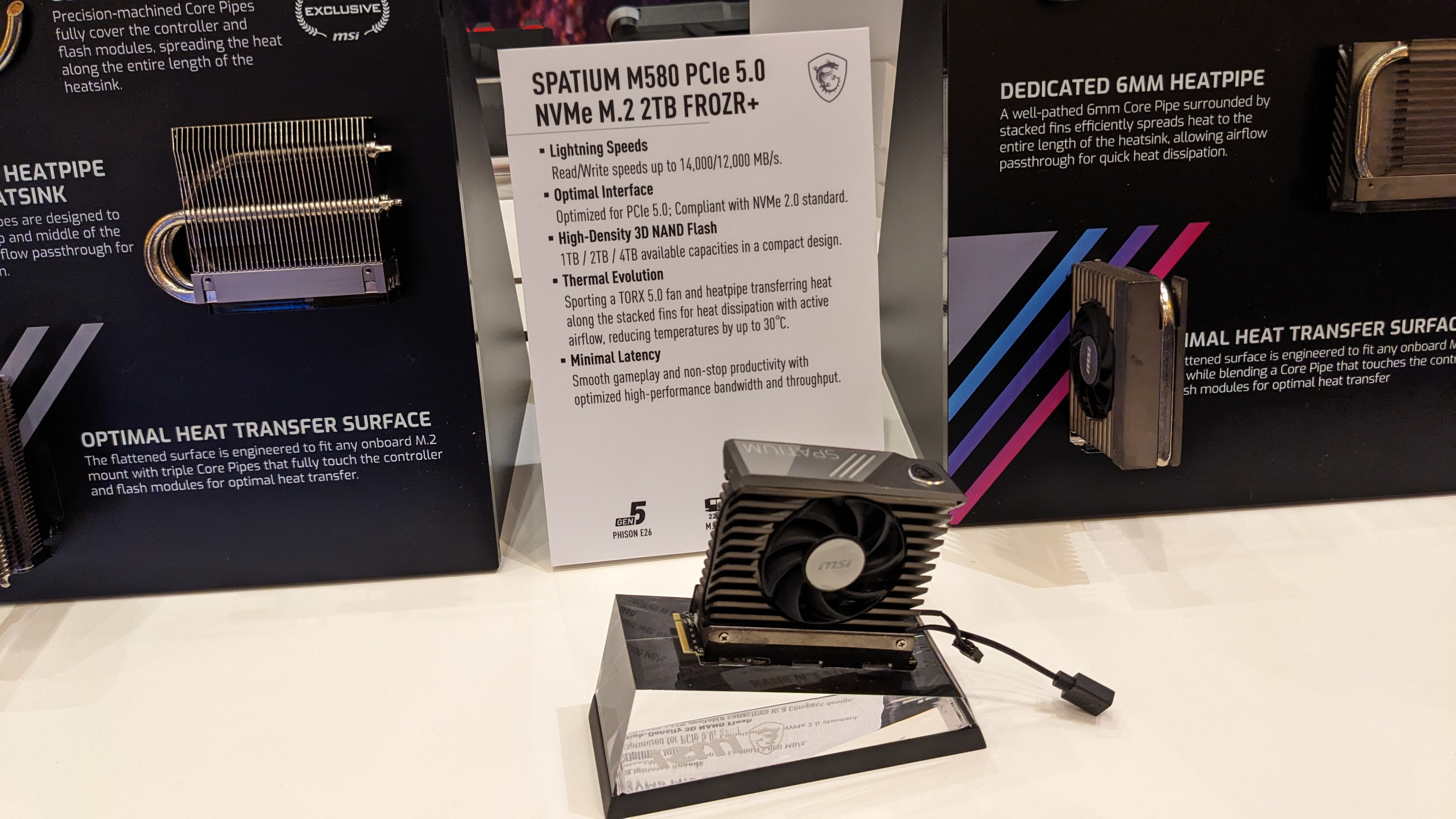MSI builds tiny AIO liquid cooler prototype for the hotter, faster SSDs of the future
The prototype is based around an SSD with a Phison E26 controller, which gets quite hot.

It's no secret that PCIe 5 SSDs can get quite hot -- so hot that they can require some form of active cooling to operate at top speed under sustained workloads. Last year, a couple of tech sites demonstrated that the Corsair MP700, powered by a Phison E26 controller, would shut down or produce significant errors after only two or three minutes without cooling. Another drive, the Crucial T700, throttles down to hard drive speeds without at least some kind of heatsink.
For those reasons, we've seen a lot of PCIe 5 drives with fans and / or beefy heatsinks. And now, at CES 2024, MSI is showing off the Spatium M580 FROZR Liquid, a prototype SSD that uses its own small AIO cooling solution, complete with a radiator, a pump, a blower-style fan, and heatpipes. It's a quirky but impressive setup that's designed to cool an SSD that has a Phison E26 controller, and boasts sequential read and write speeds of up to 14,000 and 12,000 MBps.
You need to keep things cool. Phison, which makes the leading PCIe 5 controller in the E26, recommends you keep the entire SSD below 50 degrees Celsius. Technically speaking, the NAND Flash can operate at up to 85 degrees Celsius before shutting down, but that's not optimal for performance.
But do you really need a mini AIO cooler for today's fastest SSDs? Probably not, MSI's reps told us, but they worked on this prototype because it kept the drive's temps lower than alternative cooling options, so they expect future SSDs to benefit from this level of thermal management.
MSI also showed a fan-based version of the Spatium M580, which it calls the Spatium M580 FROZR+. This model has a larger, Torx 5.0 fan, a 6mm heatpipe and plenty of fins. It also has an attractive top surface, emblazoned with the MSI logo and three RGB light strips.
Like the Spatium M580 FROZR Liquid, the FROZR+ has a Phison E26 controller and sequential speeds of up to 14,000 and 12,000 MBps respectively. MSI claims that its cooling design lowers temps by 30 degrees over other solutions.

There's no word yet about whether either Spatium M580 will come to market, though it seems likely that MSI will launch some kind of E26-powered drive that promises 14,000 / 12,000 MBps speeds. Whether it will have the AIO design or the active fan design or a choice of either remains to be seen. Whatever the case, the AIO cooler on the Spatium M580 FROZR Liquid is a harbinger of SSDs to come, because while some PCIe 5.0 SSDs are expected to get less thermally demanding, PCIe 6.0 is also on the horizon. So it's good to see MSI's engineers trying to stay ahead of the needs of tomorrow's faster, hotter, solid-state drives.
Get Tom's Hardware's best news and in-depth reviews, straight to your inbox.
Avram Piltch is Managing Editor: Special Projects. When he's not playing with the latest gadgets at work or putting on VR helmets at trade shows, you'll find him rooting his phone, taking apart his PC, or coding plugins. With his technical knowledge and passion for testing, Avram developed many real-world benchmarks, including our laptop battery test.
-
husker Question for an expert: Would have having multiple SSDs in some kind of RAID configuration be another way to solve the heat problem? Rather than one drive working superfast, how about 2 drives (or more) working moderately fast?Reply -
redgarl Reply
Just buy PCIe Gen 4 SSDs... problem solved...husker said:Question for an expert: Would have having multiple SSDs in some kind of RAID configuration be another way to solve the heat problem? Rather than one drive working superfast, how about 2 drives (or more) working moderately fast? -
toffty I think a new form factor is needed if there is so much heat now and PCIE 6 will only make this worse.Reply -
hotaru251 and yet again another "tiny" cooler for a ssd that will not work in any game build because of where the primary m.2 is located (right above/under GPU)Reply -
thestryker Ah yes solving the problem that the industry created rather than never having it in the first place. M.2 is the dumbest desktop/workstation interface choice and it's here to stay because it's cheaper to design boards this way.Reply
While you could probably use this in most machines you're still sandwiching heat between heat especially if you're using an air cooler on your CPU. A much better solution would be for the M.2 slots to be away from the CPU and GPU, but that would cost board manufacturers money.
I would be thrilled if they just nuked M.2 entirely and shifted the consumer industry to E1.S (personally I'd be happy with 4x SlimSAS plugs, but I get that people don't like wires). This would cost more money and likely require the industry to agree on a small backplane design though so never going to happen.


